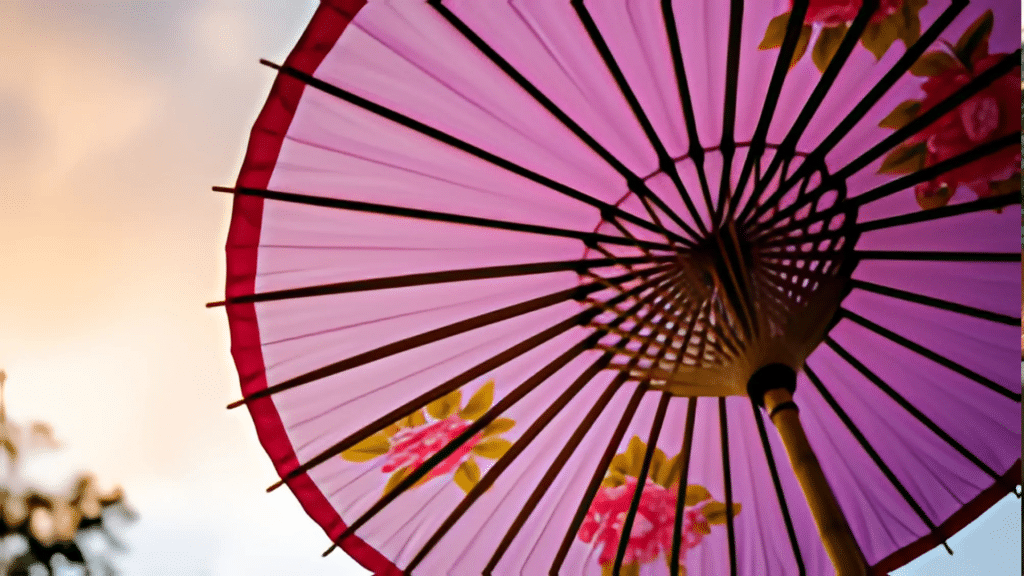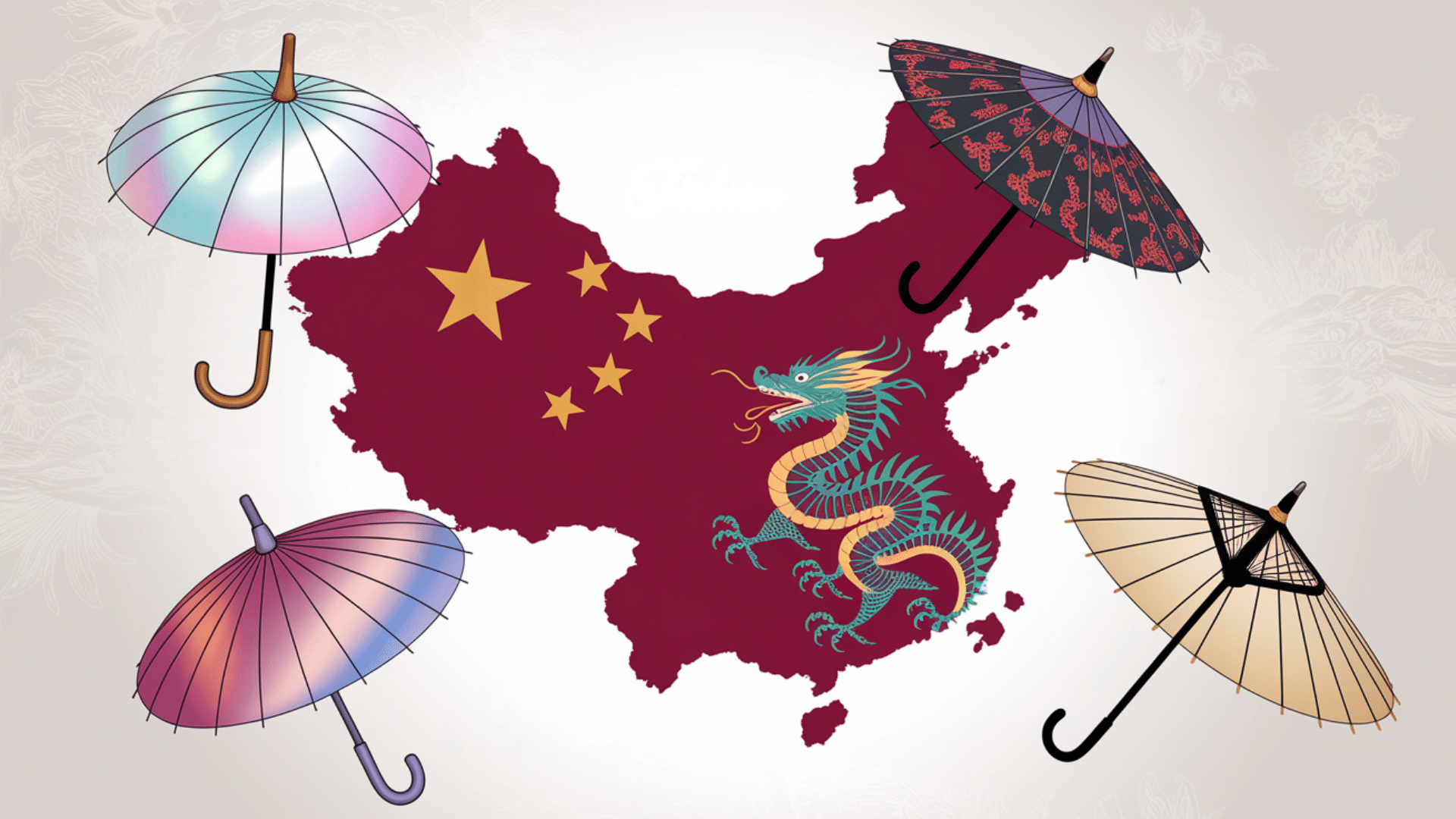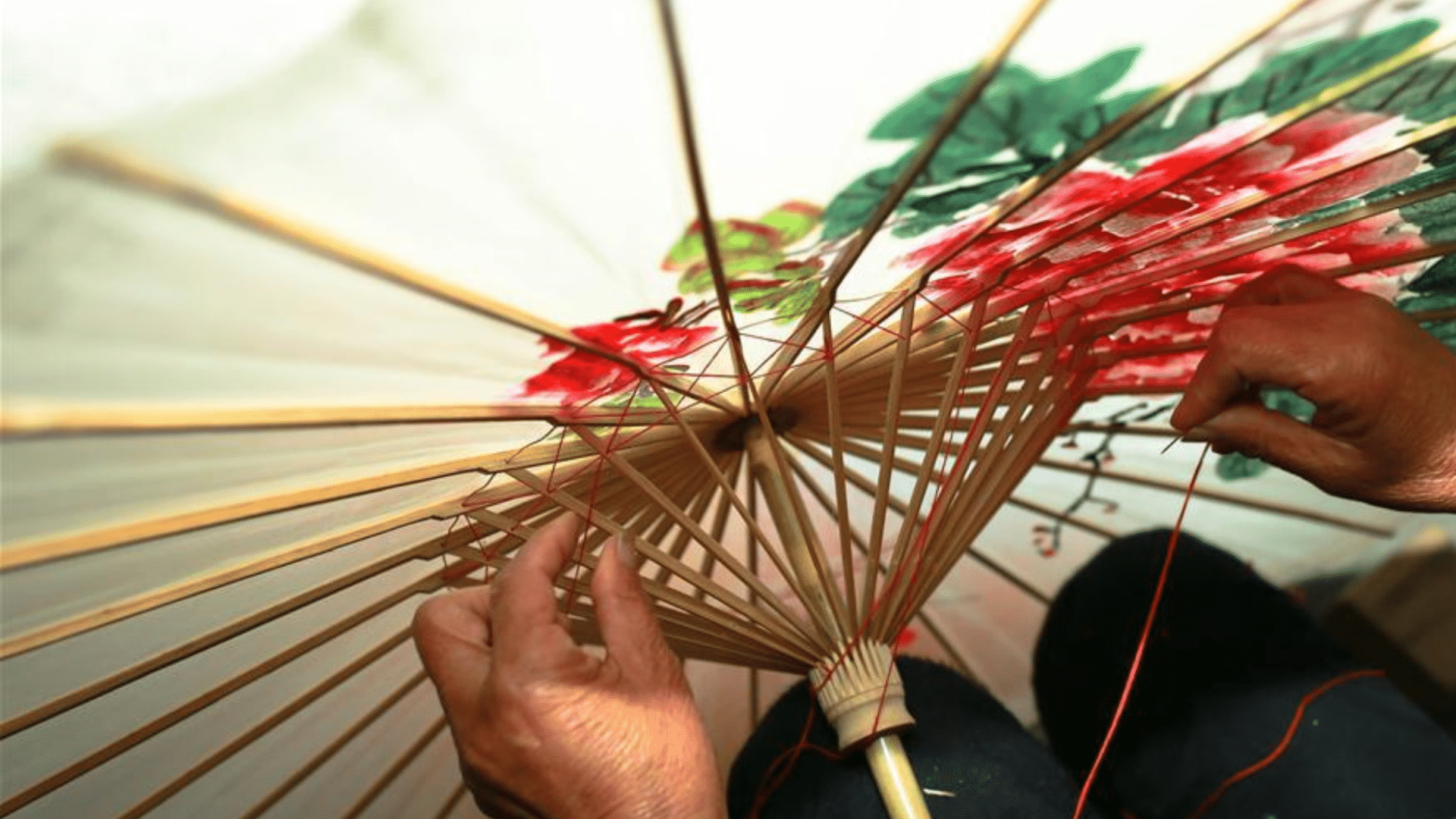Ever used an umbrella to block the sun or stay dry in the rain? Of course, you have, it’s one of those everyday essentials we barely think about.
However, did you know that the umbrella has been around for over 2,000 years and originated in ancient China?
Back then, it wasn’t just about keeping dry. The umbrella was a symbol of status, dignity, and cultural pride. Crafted with care and meaning, it told stories of nobility and artistry.
So, how did this simple tool become such a powerful symbol? Let’s step back in time and uncover its engaging origins.
Origin of the Chinese umbrella
The earliest known umbrella in China dates back to the Zhou Dynasty (around 1046–256 BCE). These umbrellas were first made to protect nobles from both the sun and rain.
Crafted from bamboo, silk, and paper, they were strong and flexible and often coated with natural oils to keep water out:
| Dynasty | Primary Use | Materials & Features |
|---|---|---|
| Zhou | Symbol of nobility | Bamboo frame, silk canopy, feather adornments |
| Han | Functional for scholars/travelers | Paper, cloth, lacquered surfaces |
| Tang | Artistic and ceremonial gift | Oiled paper, elaborate hand-painted motifs |
| Song | Widely used by commoners | Cotton fabric, simpler wooden frames |
| Ming/Qing | Fashionable household item | Painted silk, improved folding mechanisms |
Why were Chinese Umbrellas Important?
Chinese umbrellas carried profound significance throughout history, becoming integral to social structure and daily rituals.
Their impact extended beyond practical use, weaving into the fabric of cultural identity and symbolic expression.
- Status Markers: The size and decoration of umbrellas revealed social position, with imperial officials granted exclusive rights to designs that displayed their rank.
- Ceremonial Tools: Umbrellas featured in weddings and festivals, symbolizing protection and blessings while creating sacred space during important life celebrations.
- Spiritual Protection: Red umbrellas were believed to ward off evil spirits, and special symbols painted on their surfaces were thought to deflect misfortune.
- Cultural Identity: Regional umbrella designs served as visual representations of geographical origin, allowing immediate recognition of one’s hometown and ancestral connections.
Regional Variations in Umbrella Craftsmanship
Different parts of China added their own twist to umbrella-making.
Here’s how it looked across regions:
| Region | Unique Features | Used For |
|---|---|---|
| Fujian | Glossy coating with soft colors | Temple events, home décor |
| Sichuan | Bright, bold dragon prints | Festivals, plays |
| Yunnan | Thick, painted paper with bold lines | Dances, cultural shows |
| Zhejiang | Smooth silk with golden tips | Weddings, rituals |
Traditional Craftsmanship Behind the Ancient Chinese Umbrella
Creating a Chinese umbrella was more than construction, it was an art passed down through generations: each step combined function, beauty, and cultural meaning to produce something truly masterpeice.
Step 1: Cut the Bamboo
Artisans began by slicing bamboo into thin, even strips. These strips were soaked in water to soften them, then gently bent into curved ribs that formed the umbrella’s flexible skeleton.
Step 2: Build the Structure
The bamboo ribs were arranged carefully around a central wooden shaft. They were tied tightly with strong thread or string, allowing the frame to open and close smoothly without breaking.
Step 3: Stretch the Cover
Thin sheets of silk or rice paper were pasted over the ribs. These covers were pulled tight and smoothed by hand, forming an even, rounded canopy across the bamboo structure.
Step 4: Waterproof the Cover
To make the umbrella weather-resistant, the entire paper or silk surface was coated with tung oil or peanut oil. This not only protected it from rain but also added a soft, natural gloss.
Step 5: Add Designs
Once dried, the umbrella became a canvas. Skilled painters used fine brushes to add flowers, birds, dragons, or poetic calligraphy, turning each umbrella into a one-of-a-kind cultural artwork.
Step 6: Finish and Dry
The final umbrellas were left to dry in shaded, airy spaces to prevent cracking. Each was tested for smooth opening, proper balance, and aesthetic quality before being considered complete.
Cultural Echoes of the Chinese Umbrella
The impact of the Chinese umbrella didn’t end at its borders. As it traveled across Asia, it took on new forms while keeping its cultural soul intact.
- Chinese umbrellas spread across Asia through ancient trade routes.
- In Japan, they evolved into folding models with curved handles.
- In Korea, they were used in royal ceremonies and traditional theater.
- In Thailand and Laos, smaller versions appeared in temple and festival rituals.
- Each culture adapted the umbrella, but its Chinese roots remained strong.
- Today, they appear in cultural dances, art galleries, and parades.
- They’re also seen in weddings and traditional markets.
- Chinese umbrellas continue to symbolize beauty, craftsmanship, and cultural pride.
Conclusion
Isn’t it remarkable how something you open in the rain once helped emperors showcase their power? Or carried blessings through wedding halls?
These umbrellas aren’t just old, they’re alive with meaning. So next time you pop open that fold-up canopy, think of the hands that tied bamboo with thread or brushed ink onto silk.
Feel like holding a piece of history?
You still can. Visit a cultural market, try a DIY kit, or support an artisan online.
Who knew keeping dry could be so full of story?






















